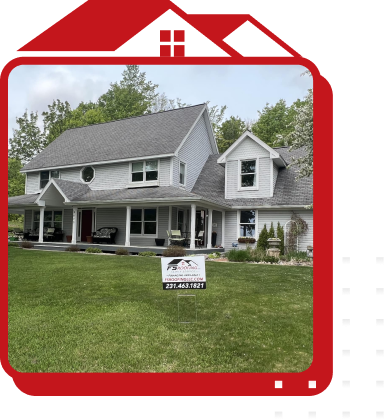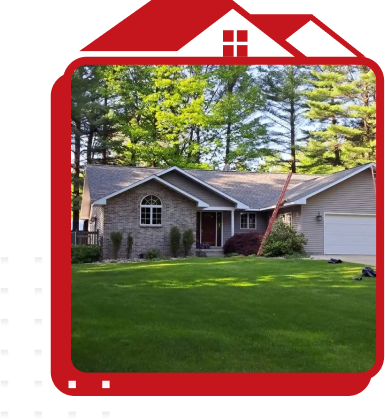Roofing Company in Gaylord
Roofs are built to withstand all weather conditions and debris. However, elements can take a toll on them, especially after long-term exposure. For instance, the sun’s heat can cause the roofing material to expand and contract, which can lead to warping, cracking, or loosening. UV rays can break down the bonds that hold your roofing material together, weakening it and exposing it to other elements like wind, snow, and storms.
Regular maintenance can help alleviate these issues by addressing minor problems before they become major ones. Our roofers will thoroughly inspect your roof to identify areas of weakness and damaged parts. They will also remove leaves, branches, and dirt from your roof surface and gutters, re-seal flashings, replace damaged or missing shingles, repair nail pops, and paint rusted metal vents.
It’s good practice to schedule professional maintenance from a roofing contractor at least twice a year. However, be sure to also call a roofer after major storms, heavy snow, or strong wind for inspections.
In between your maintenance scheduled visits, you should call for roofing repairs when you notice any of these signs.
- Leaks or water stains
- Shingles missing, damaged, or curling
- Visible sagging on the roof
- Energy bills rising
A leaking roof means water has passed through the shingles, underlayment, decking, and insulation before finally making its way into your home. It also means the damage is already extensive. If not addressed promptly, you risk having to replace your entire roofing structure.
Missing, damaged, or curling shingles allow water to penetrate the roof’s protective layers. Sagging occurs when the weight of debris on the roof is too much for the underlying structure to support. Eventually, your roof will be in danger of collapsing.
Your roof and energy bills are also directly related. If there’s any damage, heat will escape during winter or sneak in during the summer months, forcing your HVAC system to work harder to maintain comfortable indoor temperatures. A system working too hard consumes a great deal of energy.
Replacing your roof is also another option, especially if yours is getting old. This gives you a chance to improve your home’s appearance, explore the latest roofing technology, and enhance your safety and security. The general rule of thumb is that you should consider replacing your roof after 20 years. However, this timeline depends on the type and quality of your roofing material and the extent of damage. Slate, clay, and concrete roofs can last for over 100 years with proper maintenance, and metal roofs around 50 years.











